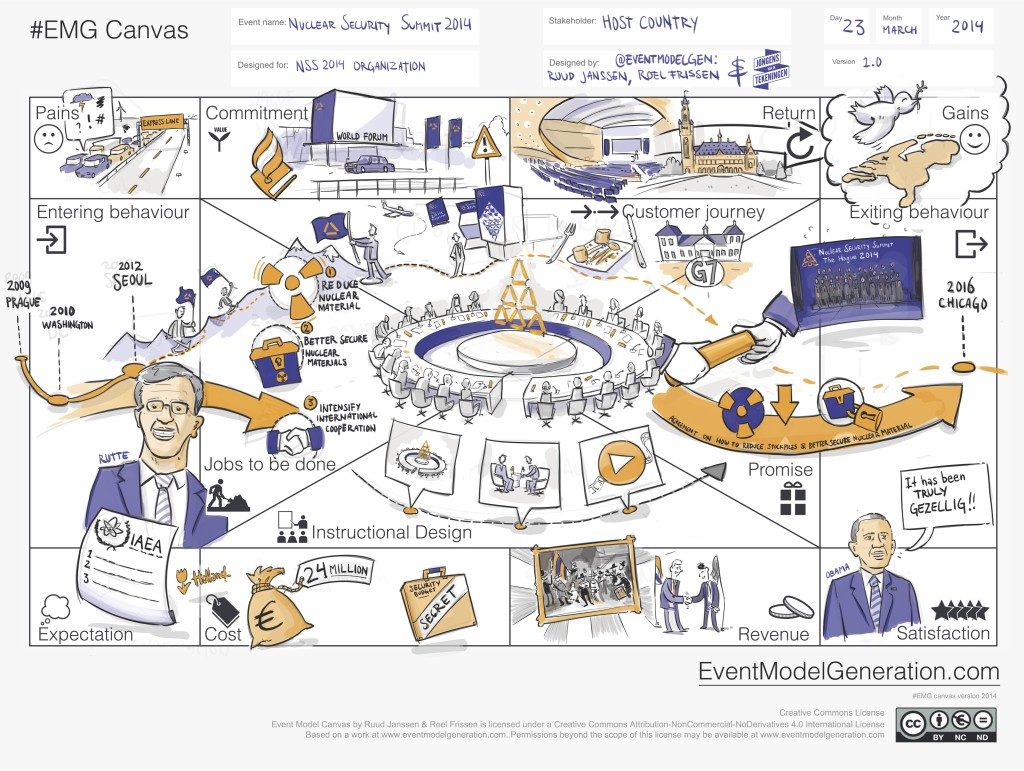As a homage to the team that very successfully delivered the Nuclear Summit 2014, the creators of the Event Canvas engaged 150 event professionals to map out the canvas and consolidate the findings op this epic event into one Event Canvas. The Canvas was handed as a gift to the organisers.
"It has been truly gezellig." - President Barack Obama
In 2009 President Obama delivered a speech in Prague in which he called nuclear terrorism one of the greatest threats to international security. With that in mind, Mr Obama hosted the first Nuclear Security Summit (NSS) in Washington DC in 2010, in order to draw attention, at the highest possible level, to the need to secure nuclear material and thus prevent nuclear terrorism. Forty-seven countries and three international organisations participated in the first summit. In 2012 the second NSS was held in Seoul.
Fifty-three countries and four international organisations were invited. The first summit was concerned with making political agreements, while the follow-up in Seoul focused on the progress made on implementing those agreements. The third NSS, in The Hague in 2014, centred on the results achieved and the future. Under the NSS process, countries work to improve their nuclear security on the basis of the Washington Work Plan, which contains numerous measures and action points. In Seoul a number of additional action points were formulated and set down in the Seoul Communiqué. The NSS process is ongoing, and since 2009 has required world leaders and diplomats to devote extra attention to the issue of nuclear security. Extensive consultations are held in the run-up to every summit. For NSS 2014 this process started in 2012. The negotiators for the various countries, known as sherpas and sous sherpas, discuss the progress made and confer on key themes, work plans and measures. Ultimately, these negotiations lead to decisions, which are later affirmed at the summit and published in a communiqué.



